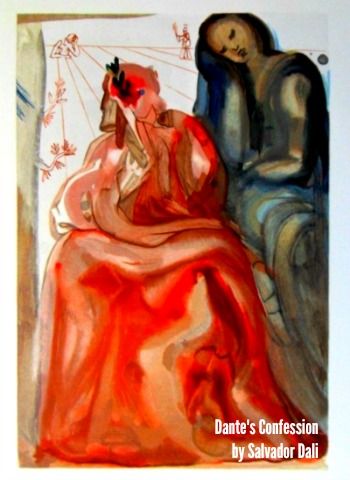The Making Disciples Today Blog has reflections to help you grow in your journey of missionary discipleship, reviews on recommended Catholic evangelization resources, and practical insight on how to evangelize in your daily life.
- Details
- Written by: Kristin Bird

I walked past the Advent wreath at Mass this weekend and felt that familiar jolt of recognition. Ours is still packed in a storage bin in a corner of the basement. The candles aren’t ready. Nothing is set out. I haven’t planned a single thing for my prayer life. We haven’t talked about Advent as a family.
If you’re in the same spot, you’re in good company.
Advent always begins four Sundays before Christmas, but it never seems to wait for us to be ready.
- Details
- Written by: Burning Hearts Team

In Amoris Laetitia, Pope Francis has laid out a vision for our families, our relationships, our churches, and our world - a vision of love and accompaniment. Unfortunately, phrases like "the art of accompaniment" have become a musunderstood buzzword within church circles.
The "art of accompaniment” and is so much more than simply a way of being pastoral to those whose beliefs and behavior are at odds with the Gospel. In the hands and heart of a missionary disciple, accompaniment is a tool for walking with others as they journey into deeper relationship with Christ and the truth of the His Church.
All of us fall into the trap of trying to tell other people what to feel and how to think instead of the listening, and openness of heart that accompaniment calls us to. What starts as sharing my own emotions quickly turns into debating, posturing, defending, and becoming solution-focused - to closing the doors of our hearts rather than opening.
When I jump to debate and response rather than listening, I ignore the lived experience of the person in front of me. I focus on myself - my own defensiveness, skepticism, anger, etc - rather than being truly present to the other. When I jump to solutions rather than compassion and empathy, I am not truly present to the way the Holy Spirit is moving and working in myself or the other person.
Genuine accompaniment calls us to compassion, to empathy, and to listening - rather than arguing. To be clear: this empathy doesn’t require us to change our most deeply held convictions. It simply means that we refuse to let the desire to “win” cause us to lose sight of the presence of God in the person in front of us. It means remembering that we can ALWAYS pause for compassion.
The 10 tips for dialouge below come from Amoris Laetitia, and Pope Francis calls this loving dialogue “essential” for family life. I think you'll find them applicable beyond the immediate family to our human family - and civil society as well.
Ten Tips on Dialogue from Pope Francis
1. Recognize the real importance and dignity of the other person.
Recognize others’ right “to think as they do and to be happy.” Pope Francis challenges us to acknowledge the values of the other’s “deepest concerns” and what he or she is trying to say (no. 138).
- Details
- Written by: Kristin Bird
 At its core, the New Evangelization has everything to do with this question: Do I have a personal relationship with Jesus Christ?
At its core, the New Evangelization has everything to do with this question: Do I have a personal relationship with Jesus Christ?
If we want to be intentional disciples who live the New Evanglization in our parishes, schools, workplaces, and homes, we must begin by deepening our own relationships with God. A central tenet of Pope Benedict XVI's teaching on the New Evangelization focused on the centrality of prayer in this mission. Benedict XVI understands prayer as holding a two-fold significance in evangelization:
- Those sharing the faith must first be re-evangelized ourselves, growing in habits of prayer and contemplation amidst life’s busyness; and
- Among those with whom we share the faith, prayer constitutes a deeply personal and essential means by which one encounters God.
Benedict XVI writes:
“Praying actualizes and deepens our communion with God. Our prayer can and should arise above all from our heart, from our needs, our hopes, our joys, our sufferings, from our shame over sin, from our gratitude from the good. It can and should be a wholly personal prayer." [1]
The role of prayer in the New Evangelization is central for the Pope Emeritus, and it must be for as well.
- Details
- Written by: Connie Mayta

I have been wanting to read Dante Alighieri’s Divine Comedy for some time, but have always been too busy to begin. However, after learning of Pope Francis’ high valuation of the poem, I knew that I could no longer delay.
Through his writings, Dante, is a man who invites us to regain the path of our human journey and the hope to once again see the bright horizon where shines the full dignity of the human person.
Happily, I have found the poem to be much more understandable and enlightening than I had envisioned. Despite its Medieval nature, the poem ignites the deadened imagination and reminds the reader of the undeniable human desire for God.
Dante’s Divine Comedy begins with Inferno, which describes the principle character’s journey through hell. I began Inferno near the beginning of Lent and have found it to be an excellent aide to Lenten preparations for confession. Journeying through the various rings of hell, and the corresponding human sins, invites the reader to make an interior journey into the depth of one’s own soul.
Dante’s punishments are carefully crafted to reflect the underlying nature of unholy human behaviors. The vivid images compel the reader to determine if one’s current state of being corresponds to the state of the punished sinners.
For example, Dante’s pilgrim encounters a group of souls who lived their life with no real purpose. They were too cowardly, or too lazy, to devote themselves completely to God or even to adamantly resist Him. As the pilgrim watches, he sees a blank banner go by:

